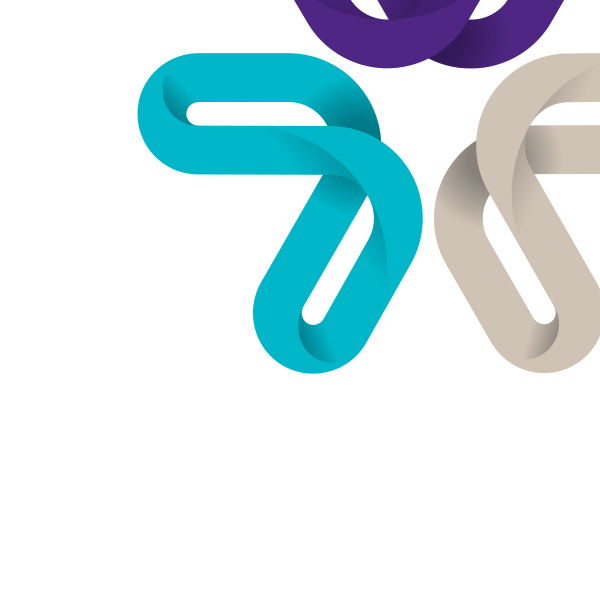-
Compliance and audit reviews
From mandates, best practice procedures or accreditations, to simply gaining peace of mind, our technical and industry experts have you covered.
-
External audit
Strengthen business and stakeholder confidence with professionally verified results and insights.
-
Financial reporting advisory
Deep expertise to help you navigate New Zealand’s constantly evolving regulatory environment.
-
Corporate tax
Identify tax issues, risks and opportunities in your organisation, and implement strategies to improve your bottom line.
-
Indirect tax
Stay on top of the indirect taxes that can impact your business at any given time.
-
Individual tax
Preparing today to help you invest in tomorrow.
-
Private business tax structuring
Find the best tax structure for your business.
-
Tax disputes
In a dispute with Inland Revenue or facing an audit? Don’t go it alone.
-
Research & development
R&D tax incentives are often underused and misunderstood – is your business maximising opportunities for making claims?
-
Management reporting
You’re doing well, but could you be doing even better? Discover the power of management reporting.
-
Financial reporting advisory
Deep expertise to help you navigate New Zealand’s constantly evolving regulatory environment.
-
Succession planning
When it comes to a business strategy that’s as important as succession planning, you can’t afford to leave things to chance.
-
Trust management
Fresh perspectives, practical solutions and flexible support for trusts and estate planning.
-
Forecasting and budgeting
Prepare for every likely situation with robust budgeting and forecasting models.
-
Outsourced accounting services
An extension of your team when you need us, so you can focus your time, energy and passion on your business.
-
Setting up in New Zealand
Looking to set up a business in New Zealand? You’ve come to the right place.
-
Policy reviews & development
Turn your risks into strengths with tailored policies that protect, guide and empower your business.
-
Performance improvement
Every business has untapped potential. Unlock yours.
-
Programme & project management
Successfully execute mission-critical changes to your organisation.
-
Strategy
Make a choice about your vision and purpose, where you will play and how you will win – now and into the future.
-
Risk
Manage risks with confidence to support your strategy.
-
Cloud services
Leverage the cloud to keep your data safe, operate more efficiently, reduce costs and create a better experience for your employees and clients.
-
Data analytics
Use your data to make better business decisions.
-
IT assurance
Are your IT systems reliable, safe and compliant?
-
Cyber resilience
As the benefits technology can deliver to your business increases, so too do the opportunities for cybercriminals.
-
Virtual asset advisory
Helping you navigate the world of virtual currencies and decentralised financial systems.
-
Virtual CSO
Security leadership and expertise when you need it.
-
Debt advisory
Raise, refinance, restructure or manage debt to achieve the optimal funding structure for your organisation.
-
Financial modelling
Understand the impact of your decisions before you make them.
-
Raising finance
Access the best source of funding for your business with a sound business strategy and rigorous planning.
-
Business valuations
Valuable decisions require valued insights.
-
Complex and international services
Navigate the complexities of multi-jurisdictional insolvencies.
-
Corporate insolvency
Achieve fair and orderly outcomes if your business – or part of it - is facing insolvency.
-
Independent business review
Is your business viable today? Will it be viable tomorrow? Give your business a health check to find out.
-
Litigation support
Straight forward advice from trusted advisors to support litigation and arbitration matters, expert determinations and other specialist hearings.
-
Business valuations
Valuable decisions require valued insights.
-
Forensic accounting & dispute advisory
Understand the true values, numbers and dollars at stake, as well as your obligations and rights to ensure value is preserved and complexities are managed.
-
Expert witness
Our expert witnesses analyse, interpret, summarise and present complex financial and business-related issues which are understandable and properly supported.
-
Investigation services
A fast and customised response when misconduct occurs in your business.
From 1 April 2021, a new 39% personal tax rate applies on income above $180,000. To ensure a consistent taxation of non-cash benefits, FBT rates have also significantly increased.
The single rate alone has increased from 49.25% to 63.93%, and the top mixed rates have similarly increased. For most employers, if no additional action is taken, their FBT cost of providing non-cash benefits could be expected to increase by up to 30% in the 2021 year.
The good news - particularly for employers who provide non-cash benefits to employees earning less than $180,000 - is that these increased costs may well be avoided with good (and early) planning, and with some changes to the FBT filing options selected.
Current practice
Due to the relatively low top PAYE/FBT thresholds, approximately 90% of employers have paid their FBT using either the single rate or short form alternate rate FBT calculation methods.
Single rate method
This process provides the simplest method of calculation. FBT is calculated and returned quarterly on non-cash benefits at the single rate which is now 63.93%; previously it was 49.25%. The rate is set to result in the same tax cost as if an equivalent taxable payment were made to an employee on the top marginal tax rate; this enables the employee to purchase the non-cash benefit.
Short-form alternate rate method
Under this method, employers pay FBT on non-cash benefits at the ‘alternate rate’ in quarters one to three - 49.25% or 63.93% for benefits to major shareholder employees (previously this was 43% and 49.25%). In quarter four, employers ‘square-up’ the tax on all attributed benefits paid during the year to 63.93% (previously 49.25%). Non-attributed benefits are pooled and taxed at the ‘alternate rate’ - 49.25% or 63.93% for benefits provided to major shareholder employees (previously 42.86% and 49.25%).
Full alternate method
Use of this method has been less common.
Employers pay at the ‘alternate rate’ in quarters one to three (49.25% or 63.93% for benefits to shareholder employees, previously 49.25% and 42.86%). The quarter four calculation is then a ‘square-up’, calculating the FBT on allocated benefits for the year at a rate which correlates with each employee’s marginal tax rate. These rates are set to result in the same tax cost as if an equivalent payment were made to an employee at their marginal tax rate (enabling them to purchase the non-cash benefit). Non-allocated benefits are taxed at a standard rate of 49.25%, or 63.93% for shareholder employees.
Employers paying under the ‘single rate’ or ‘short form alternate’ methods will have usually concluded there is either no tax advantage to performing a ‘full alternate’ method calculation in quarter four (as the receiving employees earn in the top marginal tax rate), or they may have simply accepted the less favourable FBT cost on fringe benefits to avoid the additional time and complexity to calculate the ‘full alternate’ method.
With the significant increase in the FBT rates, and when employees receiving non-cash benefits may no longer earn the top marginal tax bracket, this rationale may well no longer be valid.
The benefits of changing to the ‘full alternate’ method
While this method has a reputation for some complexity, a ‘full alternate’ calculation can be carried out by a business with relative ease once business processes are setup for this.
At its easiest, relevant benefits simply need to be valued and attributed in the calculation to the employee receiving the benefit. Specific categories of benefit, and those below certain thresholds of value, are not required to be attributed and tax is calculated on these at the non-attributed rate.
‘Full alternate’ process setup
Some businesses already calculating FBT under one of the other methods may wish to implement this change by simply carrying on with their existing FBT compliance during the year either at the single rate or alternate rate, while collecting sufficient information to allow for a ‘full alternate’ square-up calculation in the quarter 4 FBT return; this can be carried out by the company or an accountant.
Employers with cash flow restrictions or with large FBT bills may wish to obtain the cash flow advantage of a change to the ‘alternate’ method early in the year and would get benefit from a quarter one move to an ‘alternate’ basis.
Employers looking apply the ‘full attribution’ method will often benefit from adopting a purpose designed spreadsheet/web tool to assist with collecting necessary information and performing the FBT calculations. These tools are usually designed to apply FBT rules to assist in calculating the FBT liability from the data provided, and may have functionality to assist in storing data, notes and other records relevant to supporting the filing position. The best tools calculate the most favourable FBT filing position by taking account of available options under tax legislation (including pooling benefits) and can provide all the figures for the preferred option with guidance on how to input these in the FBT return.
How we can help
Your Grant Thornton advisor can help you understand the likely value of any FBT savings from adopting a full alternate rate calculation based on your planned 2021 fringe benefits.



